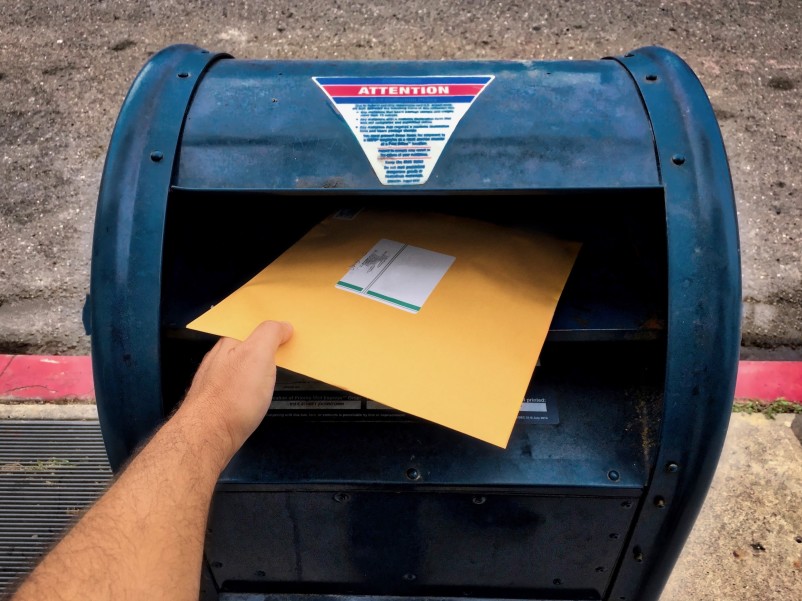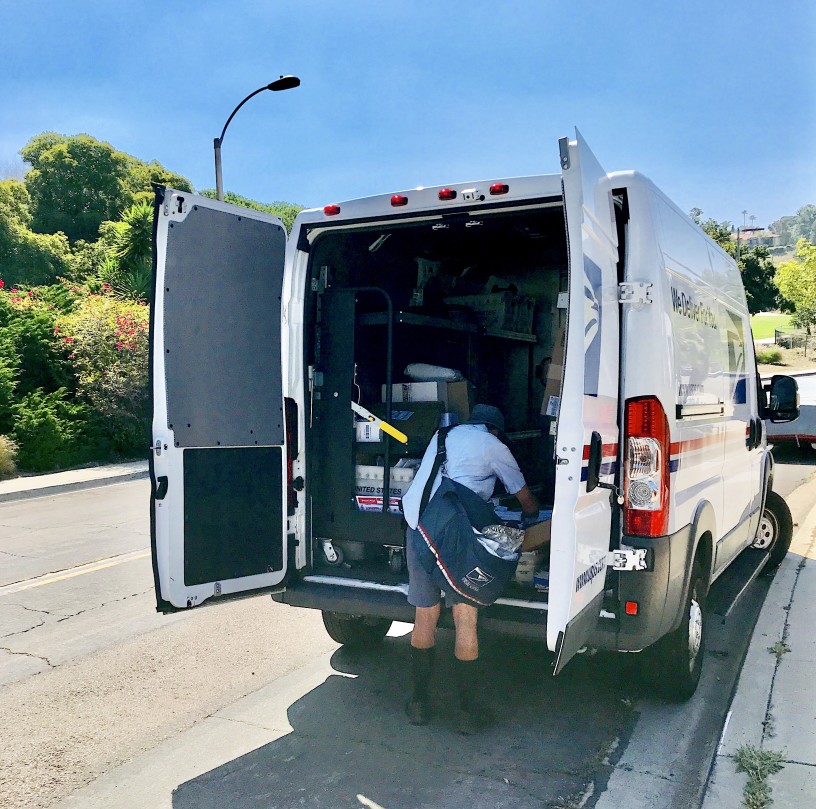Sending printed material (and other pieces of media) through the mail used to be pretty expensive. Like everything else, these packages were priced by weight – and that almost always meant that books, magazines, and other bound paper products were going to cost a small fortune to send across the United States (or even just across town). Thankfully, though, the USPS recognized how cost prohibitive this was becoming (especially for small businesses) and introduced Media Mail postage.
Giving individuals and businesses the opportunity to drop non-time sensitive pieces of media into the mail at a significantly discounted price point (so long as the media weighs less than 70 pounds total), this has become a go to option for folks not looking to spend a small fortune on postage. At the same time, the USPS recognize that some people were looking to take advantage of the Media Mail program by dropping nonapproved items into packages marked “Media Mail” just to get the postage savings. Because of this, the USPS instituted “spot check” policies that allow them to inspect any piece of Media Mail as soon as it comes down the line if they so wish. That’s part of the agreement people make when they decide to send things this way through the USPS.
If you’ve been thinking about using Media Mail and want to know how often these kinds of packages are inspected, what the inspection process looks like, and what might happen if your mail is flagged as Non-Media Mail eligible, you’ll want to check out all the inside information we highlight in the rest of this quick guide. Let’s jump right in!

Is All Media Mail Inspected?
Right out of the gate, we can tell you with 100% certainty that not every single piece of Media Mail is inspected by officials at the USPS. In fact, it’s more likely that the overwhelming majority of Media Mail sent every day in the United States goes unchecked and unverified. The amount of mail actually opened up, inspected, and verified by USPS employees empowered and given the responsibility of this task is probably unbelievably small in the grand scheme of things.
It’s important to remember just how busy the USPS is on a daily basis. Each and every day, the USPS handles somewhere around 173 million pieces of first-class mail alone – that’s not even mentioning the millions and millions of other pieces of mail sent via other types of postage (including Media Mail) that they are handling, too. On top of that, you have to remember that much of the USPS system is fully automated (or at least as much as possible). This is an organization that is looking to move things as efficiently as possible and isn’t exactly worried about squeezing every penny of profit out of each and every one of their customers. At the end of the day, thousands – maybe even 10,000 or more – pieces of Media Mail every week might get opened up and inspected to be verified that they are in fact eligible for this kind of postage.
But that’s a drop in the bucket compared to the amount of mail being sent via the Media Mail postage program. The chances are pretty good that your package is going to move right on through, provided that it meets the parameters. That being said, though, it’s important that you not take advantage of the honor system that the USPS has put in place with this kind of postage program to begin with. For starters, it’s just not the right thing to do. Secondly, you might be one of the unlucky few that eventually has your Media Mail package inspected. And if it isn’t “up to snuff” you may find that a lot more of your Media Mail packages are opened up and inspected after that, packages that inevitably get delayed, and packages that are going to be under a lot more scrutiny than they would have been otherwise.
What Does the Media Mail Inspection Process Involve?
If, on the other hand, your package does get “popped” for inspection by the USPS there’s a really streamlined and generally simplified process that it’s going to go through. For starters, only select employees working for the USPS are even given the ability, the responsibility, and the opportunity to inspect any piece of mail. As you are no doubt aware, opening up someone else’s mail (even on accident) opens you yourself to a whole host of potential criminal charges – including serious felonies. The same is true of USPS employees, by and large.
Not just everyone and anyone working for the USPS is going to be able to grab your Media Mail package off of the processing line, pop it open to see if it is legit, or even press the case further should they find that the package contents aren’t strictly eligible for Media Mail in the first place. But let’s assume that someone given the responsibility to inspect USPS packages does decide to pull your Media Mail off of the processing line and have a closer look. If that happens the situation is going to be documented right from the very start, with that individual scanning your document into the USPS system to notify that it is being inspected to begin with. Then the package is going to be very carefully opened, inspected to verify that the contents themselves are eligible for Media Mail postage, and then re-sealed and put back into the processing phase that it was pulled out of.
If everything is good to go the package is going to be moved on with absolutely no indication that anything is wrong whatsoever, and even no real notification that the package was inspected. If, on the other hand, the contents of that Media Mail package were found not to be eligible for this particular shipping program there’s going to be a bill attached – and shipping costs are going to be charged to the individual that is receiving the package. You can bet that if a recipient of Media Mail is also handed a bill for the extra shipping costs when they get their package they are going to reach out to you ASAP. And they probably aren’t going to be all that excited about it, either.
If the recipient refuses to pay the shipping costs (which usually only happens with much heavier and more expensive packages that were sent Media Mail but weren’t legitimate Media Mail items) the package will be returned to sender and that postage will be added on to the total cost that the sender will be responsible for. Should postage go ignored at that point in time than the USPS may decide that the package was “forfeited” and they are entitled to destroy or disseminate the items contained within. The USPS also has the ability to bring forward charges and to sue individuals for using Media Mail in unauthorized ways, though this is incredibly rare and very unlikely to actually happen.

What Can Be Sent Via Media Mail?
If you are going to be sending a lot of items via Media Mail it’s not a bad idea to understand exactly what is (and what isn’t) eligible to be sent with this kind of postage.
Media Mail in specific covers:
- Books that have at least eight pages
- Any sound recordings and video recordings, including on media like DVDs and CDs
- Scripts, manuscripts, periodicals, newspapers, and sheet music
- Any media that can be read by a computer (including USB sticks, hard drives, etc.)
- Actual film (including 16mm or narrower film)
- Any material that has been printed, including test material and accessories
- Printed out educational references, charts, notes, etc. and
- Looseleaf pages, binders, and other details that can include medical information
Pure marketing and advertising material (except for books that may include this material incidentally) cannot be sent with Media Mail postage. Interestingly enough, individuals also can’t send comic books through the Media Mail postage system – though they could send differently bound “graphic novels” that include the exact same content. On top of all of that, the entire weight of the package being sent through the Media Mail post cannot way any more than 70 pounds. Packages that are heavier than this (even if they are to be sent to the same destination address) should be broken down into several different packages and sent via Media Mail independently. Of course, Media Mail also needs to be very clearly labeled as “Media Mail”. The USPS can provide stickers and labels if you do not have one, though there are a lot of commercially available options that help make sure the USPS never misses how this mail should be classified.

What If My Media Mail is Found to Be Ineligible?
As we highlighted above, if USPS postal inspectors find that your Media Mail is ineligible for this postal program it will still be sent on to its ultimate destination with extra postage attached. If the recipient denies acceptance or refuses to pay the extra postage, the package will be rerouted back to the sender and they will then have to pay for the extra initial postage as well as the return postage, too. Of course, if you go to the post office to drop off Media Mail and it weighs more than 70 pounds or the USPS employee there has reason to believe that you aren’t sending eligible mail through this program they can deny it outright. In most circumstances, though, USPS employees are going to let you know that you can break your package up into multiple boxes (all clearly marked Media Mail) to get under that weight limit. They’ll also likely ask to see the contents of the package if they question whether or not it is legitimate, or they may just ask you what’s in the box without getting any more in-depth than that.
Can I Appeal a Media Mail Decision?
If a package has been returned to you with extra postage attached because the USPS felt that the contents were not actually Media Mail eligible items you may be able to appeal the decision directly. You’ll want to jump on the phone and contact USPS customer service directly for more information about how to go through this process. Their customer service line can be reached at 1-800-275-8777, but you can also find more customer service contact information – as well as online support – directly on the www.usps.com website. You should find the USPS customer service folks to be really helpful when it comes to navigating these kinds of solutions. Again, it’s not like the USPS wants to really stick it to their customers – even if they were using the wrong postage program.

US Global Mail Simplifies and Streamlines Your Mailbox Big Time
If you are receiving a lot of Media Mail packages and parcels, though, you might find that your mailbox or PO Box is starting to get gummed up with all of these boxes and envelopes flooding it all the time. On top of that, you might be looking for a little more privacy and a little more security for the items that you are having mailed to you – the kind of privacy and security that USPS services just can offer these days.
If that’s the case a US Global Mail virtual mailbox account may be right up your alley! For starters, your US Global Mail virtual mailbox is able to receive packages from the USPS via Media Mail (and all other postage services), but it can also accept packages on your behalf from FedEx or UPS DHL, and more.
That’s something you can’t do with a USPS PO Box! You also get a permanent physical mailing address when you create a virtual mailbox account with US Global Mail, a mailing address that is separate from your home address (which increases your anonymity and security quite a bit).
Best of all, you’ll be able to use that same physical mailing address no matter how many times you may move in the future – even if you move overseas! That’s because your mail can be forwarded on to you directly at up to 80% off of traditional postage costs. Combine all of those benefits with digital mail scanning, instant notification as soon as a new piece of mail or package arrives, check depositing features, and so much more and it’s not hard to see why people love US Global Mail and choose it as their modern mailbox solution. For more information (or to sign up today) check out the US Global Mail website!







